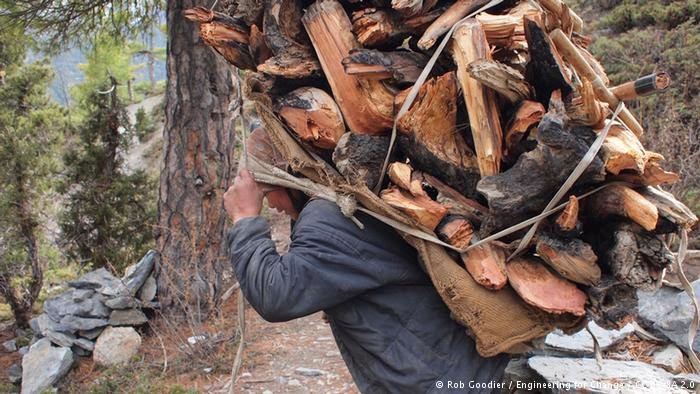CEPF Managing Director Nina Marshall witnessed some of the improvements first-hand, when she visited projects financed by the organization between 2005 and 2010 in some of Nepal’s most remote regions, such as in the Kanchenjunga-Singalila Complex bordering China.
Cabbages are produced for local
consumption or sale in an organic garden
"We supported the
Ethnobotanical Society of Nepal, for instance. They provided training to 714
households in how to cultivate medicinal and aromatic plants," explains
Marshall. "These families have better access to some of these medicines
that they would have had to otherwise purchase - and then they could also sell
them."
Still, isolation and remoteness can be challenging for many communities.
"It's a poor area, there's not a lot of development," says Marshall, who added a lack of roads makes it more difficult for locals to get their goods to market. This also means ecotourism is currently a less viable option.
The process of marketing local products is difficult too, and training is needed here, adds GACF's Pandey.
"When community forestry produces local food or local products, they find it difficult to compete on local and national markets. Big companies dominate over local products," he says.
Making the most of community forestry
Still, isolation and remoteness can be challenging for many communities.
"It's a poor area, there's not a lot of development," says Marshall, who added a lack of roads makes it more difficult for locals to get their goods to market. This also means ecotourism is currently a less viable option.
The process of marketing local products is difficult too, and training is needed here, adds GACF's Pandey.
"When community forestry produces local food or local products, they find it difficult to compete on local and national markets. Big companies dominate over local products," he says.
Making the most of community forestry
Nepal's bamboo forests are home to
the Red Panda, a threatened species
However, many community forests are
not using the resources to their full potential to generate income, and more
concrete measures linking conservation to income generation are needed,
according to a GACF case study.
The study added that while forest cover had been extended, the "livelihoods of the poor and disadvantaged have not improved as expected."
Pandey, who has been working to conserve Nepal's forests for more than 20 years, says the community forestry program has to be expanded to government-managed forests, which are still characterized by poor management and high deforestation.
Now, the government owns 58 percent of woodlands, according to the land policy reform organization Rights and Resources Initiative.
Many of the communities have cultivated and stewarded the forests for generations, and these are bound to culture and identity adds Pandey, who counts himself among those custodians.
"I am a farmer and I came from the river area," he said. "Forests are a part of my life."
The study added that while forest cover had been extended, the "livelihoods of the poor and disadvantaged have not improved as expected."
Pandey, who has been working to conserve Nepal's forests for more than 20 years, says the community forestry program has to be expanded to government-managed forests, which are still characterized by poor management and high deforestation.
Now, the government owns 58 percent of woodlands, according to the land policy reform organization Rights and Resources Initiative.
Many of the communities have cultivated and stewarded the forests for generations, and these are bound to culture and identity adds Pandey, who counts himself among those custodians.
"I am a farmer and I came from the river area," he said. "Forests are a part of my life."


